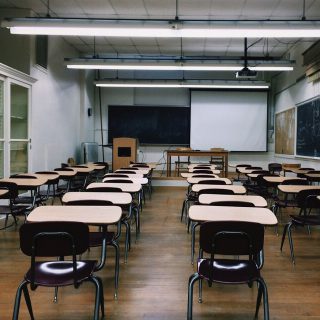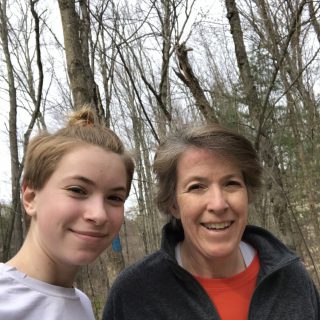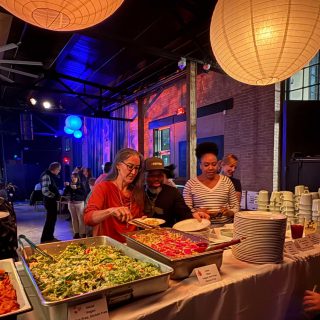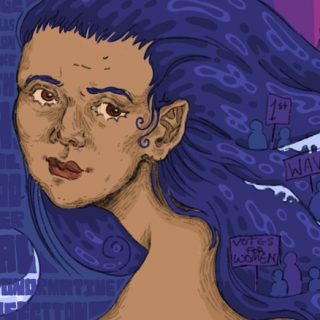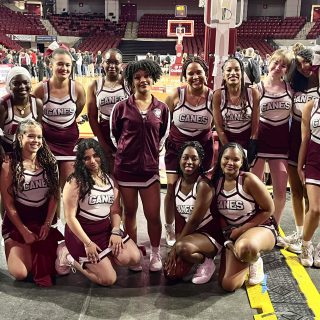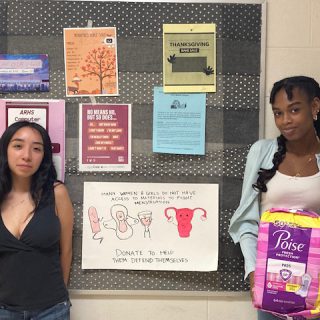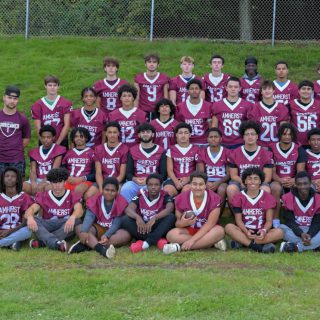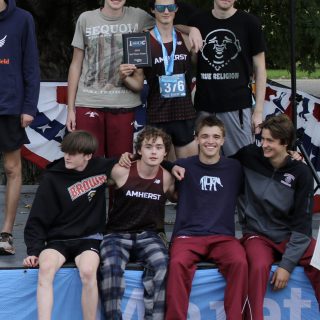Emily Dickinson museum hosts morning of poetry workshops in library
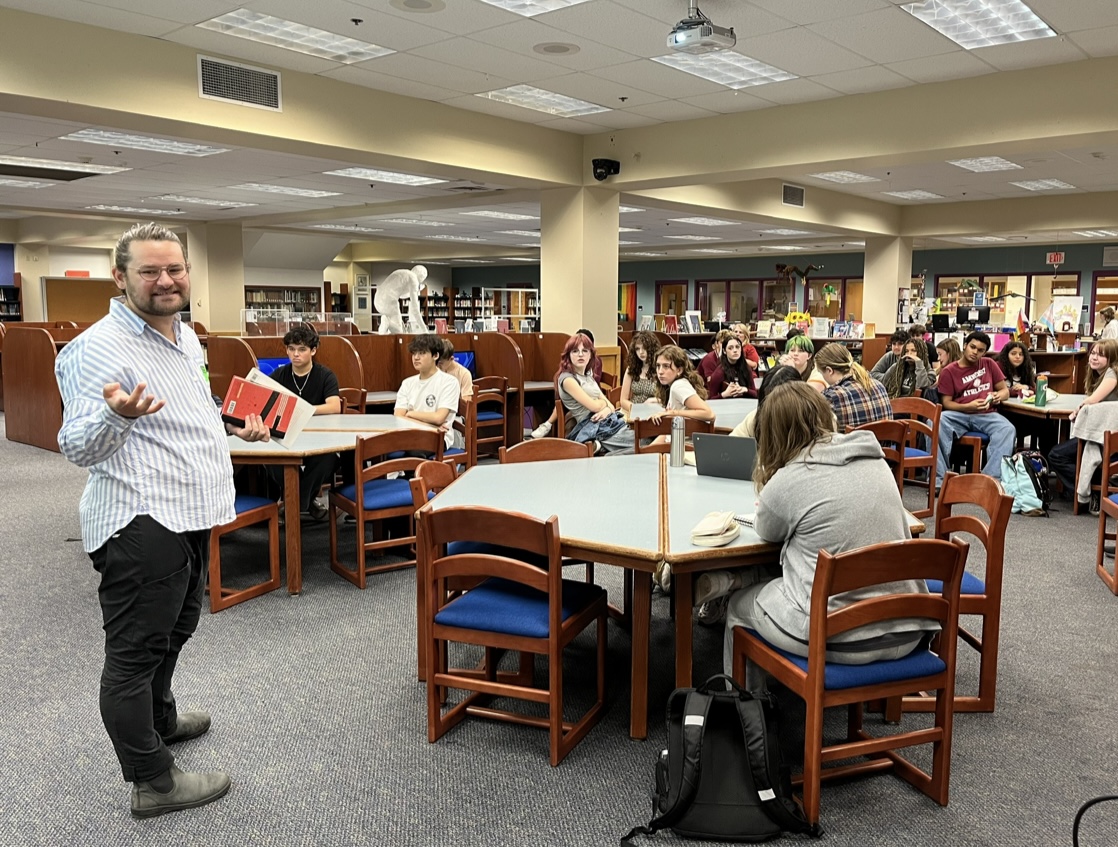
The Emily Dickinson Museum brought a contemporary poet to ARHS on Friday, September 27, in conjunction with an annual festival in which poets from across the nation celebrate Emily Dickinson’s legacy. The museum has partnered with ARHS to offer poetry workshops in September to tenth-grade students at ARHS for more than five years.
This year’s featured writer, Sebastian Merrill, held a workshop in the school library for the students of English teachers Matthew Despres and Amanda Lewis. Merrill began with a talk about his book, GHOST :: SEEDS, discussed blackout poetry, and explained how he first discovered his love of poetry.
Merrill also gave the students copies of various poems and handed out markers so they could make their own blackout poems. Blackout poetry involves taking a written piece of text from a book, magazine, newspaper, or poetry collection and redacting words by “blacking them out” to leave words that, when linked together, create new, original poetry. “It’s not about combining words,” said Merrill. “It’s about combining words in the space on the page.”
Despres said he likes how the visiting poets try to “amplify everyone’s voices” and change students’ opinions on poetry. “I’ve seen students [imply] ‘school is maybe the least interesting place where this happens,’” said Despres, but then they often shift to “maybe it should be a part of our day-to-day life because it connects [us] to feelings and people.”
“I’ve appreciated that someone from the outside can also hammer home that point,” he added.
A student in Despres’s class, sophomore Katerina Cashen, said the workshop had a powerful effect on her. “I have never done blackout poetry before,” Cashen said. “I thought it was a really interesting way of creating poetry and it’s something I would definitely consider doing again.”
In terms of the effectiveness of the program, Despres thinks workshops like these are a step in the right direction. “I think it’s effective in terms of how it’s going to catch some people’s attention that day,” said Despres. He admitted the dream would be a full residency with more exposure on a regular basis to poetry.
English Department Head Sara Barber-Just usually coordinates the scheduling of the visits and said she is always eager to see poetry come alive for students in these workshops.
“We have redesigned the way that we teach poetry at the high school over the last few years,” said Barber-Just. “In the past, students would read poetry with the goal of analyzing it, which wasn’t always accessible or interesting to everyone in the room.” Now, she said, sophomores are exposed to up to 50 contemporary poets in a choice-based project, culminating in making visual maps of poems and writing letters to their favorite poets, before writing original poetry of their own.
Elizabeth Bradley (they/them) is the Education Programs Manager at the Emily Dickinson Museum who reaches out to Barber-Just each fall to coordinate the partnership between the school and the museum and offer that year’s workshop.
They said they want the museum to be a positive part of Amherst students’ academic experiences. ”Visits to the Emily Dickinson Museum are free of charge to any visiting Amherst public school class,” said Bradley. “We encourage teachers and clubs to reach out to us if you have an idea for a visit or collaboration.”
Bradley hopes that coordinating with the high school will inspire students who feel alone in their love of poetry to think of it as an art that anyone can practice. “We may not all be poets, but poets certainly know a thing or two about speaking their truth that is inspiring,” they said. “I hope everyone has fun [in these workshops] and maybe even surprises themselves.”
